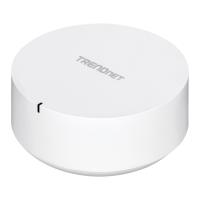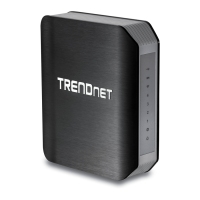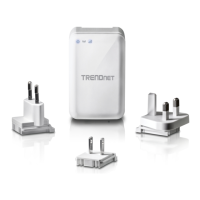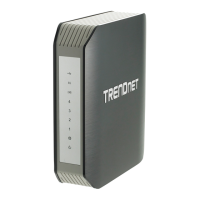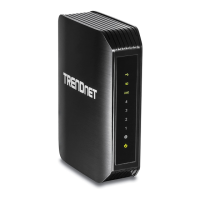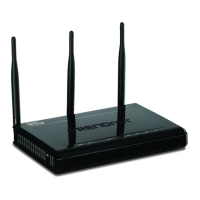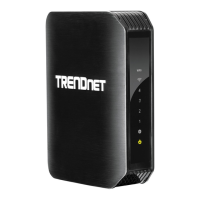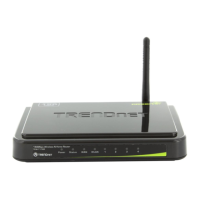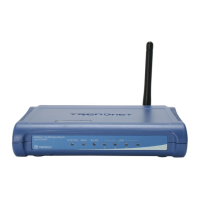© Copyright 2020 TRENDnet. All Rights Reserved.
Open a device on your network to the Internet
This router can provide access to devices on your local area network to the Internet
using the Virtual Server, Special Application, method (DMZ NOT recommended).
DMZ
Advanced > Firewall > DMZ
You may want to expose a specific computer or device on your network to the Internet
to allow anyone to access it. Your router includes the DMZ (Demilitarized Zone) feature
that makes all the ports and services available on the WAN/Internet side of the router
and forwards them to a single IP address (computer or network device) on your
network. The DMZ feature is an easy way of allowing access from the Internet however,
it is a very insecure technology and will open local area network to greater threats from
Internet attacks.
It is strongly recommended to use Virtual Server (also called port forwarding, see
“Virtual Server” on page 45) to allow access to your computers or network devices from
the Internet.
1. Make the computer or network device (for which you are establishing a DMZ link) has
a static IP address. Signing up for a Dynamic DNS service (outlined in Identify Your
Network section page 40) will provide identification of the router’s network from the
Internet.
2. Log into your router management page (see “Access your router management page”
on page 10).
3. Click on Advanced and click Firewall, then click on DMZ.
4. Click the DMZ Enable drop-down list, and select Enable.
5. Enter the IP address you assigned to the computer or network device to expose to the
Internet.
6. To save changes to this section, click Save when finished. Commit your changes to the
router by clicking on Apply/Discard Changes in the left-hand menu, and click Apply &
Reboot.
Virtual Server
Advanced > Firewall > Virtual Server
Virtual Server (also called port forwarding) allows you to define specific ports (used or
required by a specific application) and forward them to a single IP address (a computer
or device) on your network. Using this feature is more secure compared to using DMZ
(see “DMZ” on page 45) in which DMZ forwards all ports instead of only specific ports
used by an application. An example would be forwarding a port to an IP camera
(TRENDnet IP cameras default to HTTP TCP port 80 for remote access web requests) on
your network to be able to view it over the Internet. To open several ports please refer
to “Gaming” section on page 48.
Since most ISPs constantly change your home IP address, to be able to access the Virtual
Server port(s) from the Internet it is recommended to setup Dynamic DNS service
(outlined in Identify Your Network section page 40).
1. Log into your router management page (see “Access your router management page”
on page 10).
2. Click on Advanced and click on Firewall, then click on Virtual Server.
3. Review the virtual server settings. Click Add to save settings. Commit your changes to
the router by clicking on Apply/Discard Changes in the left-hand menu, and click Apply
& Reboot.
Check the option to the left most of the entry to enable and uncheck to disable.
Rule Enable – Check the option to enable the virtual server.
Rule Name – Enter a name for the virtual server.
IP Address: Enter the IP address of the device to forward the port (e.g.
192.168.10.101).
Protocol: Select the protocol required for your device. TCP, UDP, or Both (TCP
and UDP).
Public Port – Enter the port number used to access the device from the Internet.
Private Port – Enter the port number required by your device. Refer to the
connecting device’s documentation for reference to the network port(s) required.
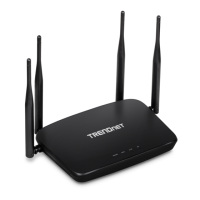
